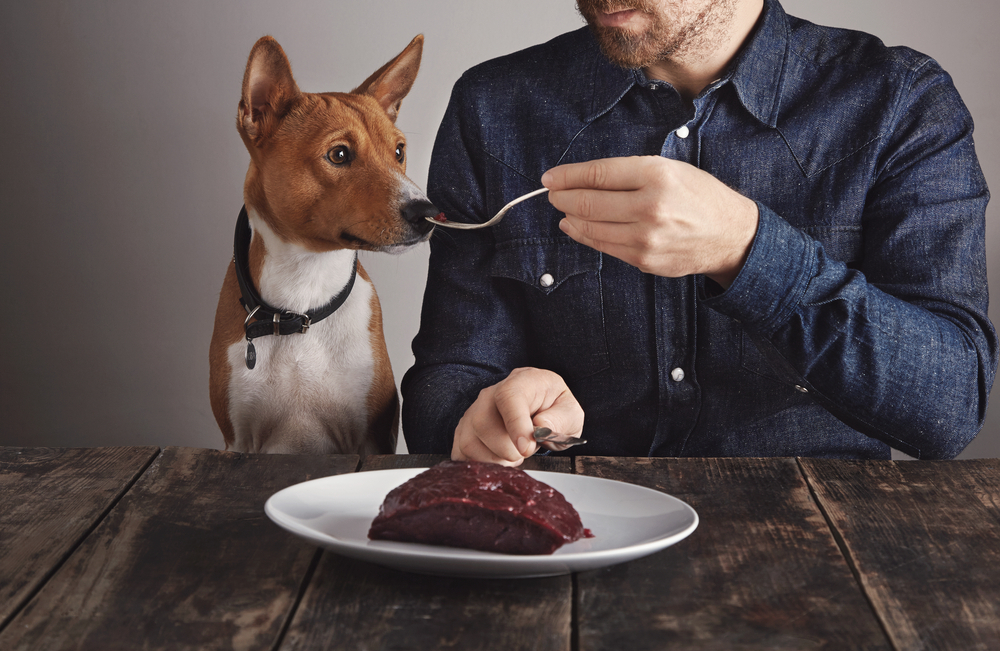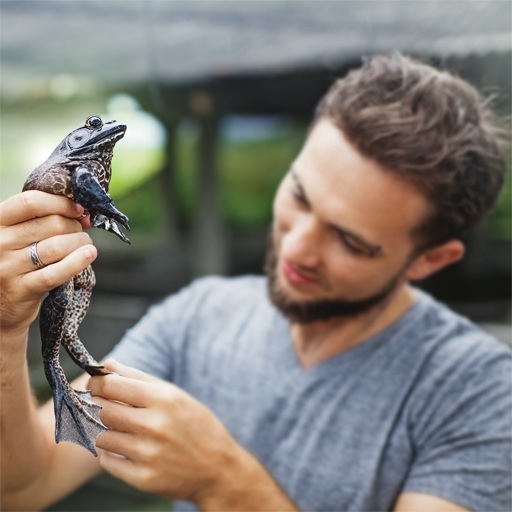Should you feed your pet The Paleo Diet?

The Paleo Diet® has become one of the most respected and scientifically distinguished health and wellness lifestyles in recent decades. But is it right for pets?
Like humans, increasing numbers of pets suffer from obesity-related health issues due to poor diets and overfeeding. Since The Paleo Diet is proven to help people lose weight and find better health, it makes sense that you’d consider giving your beloved pet the same treatment.
Of course, the dietary needs of humans are different from those of animals. So, every animal has their own unique “Paleo Diet.” In this article, we’ll break down the pros and cons of a Paleo Diet for dogs, cats, and reptiles, so you can make the right choices to help them be healthier than ever.
What is The Paleo Diet?
First, a quick refresher: The Paleo Diet is a lifestyle that focuses on eating foods similar to what our Paleolithic ancestors ate, like fresh fruits, veggies, lean meats, nuts, and seeds. It limits foods that are linked to health issues, like added salt, dairy, grains, and anything processed.
For a better idea of what is and isn’t allowed (plus a meal plan for a typical day), check out this What to Eat on the Paleo Diet infographic.
Is it right for dogs?
In short, yes—man’s best friend can thrive on The Paleo Diet.
Just as the earliest humans ate only what they could hunt and gather, canine ancestors either ate the humans’ scraps or hunted their own prey—a far cry from today’s commercially available, grain-based dry food.
Ideally, a dog’s diet should consist of 70-80 percent meat and fish, and the remaining 20-30 percent raw and cooked vegetables.
Dogs can digest both raw and cooked meat; however, hunted meat was eaten fresh. Raw meat bought at the store carries a risk of salmonella. That’s why we recommend that you cook meat all the way through for your four-legged friends, as a precaution.
When it comes to fruits and veggies, dogs can typically enjoy a wide variety. However, steer clear of cherries, grapes, avocados, garlic, and onions, as these can all be dangerous for dogs to consume. When in doubt, do your research before you toss anything into their bowl.
If a pure meat and produce diet sounds too finnicky (or too expensive), try an in-between approach and start your pup on a grain-free kibble made with only natural ingredients. This processed option isn’t truly Paleo, but it’s a start.
The most important thing to remember is that you need to make dietary changes gradually. Switching from grain-based kibble to pure meat and vegetables can be a big shock to their digestive systems, so give them time to adapt.
Start by feeding them their existing diet about 80 percent of the time, and the new diet 20 percent of the time. Each day, slowly increase the proportion of new food to old food.
Since a Paleo Diet for dogs can get expensive, here are some things to keep in mind:
- Buy in bulk whenever possible to keep costs down.
- Use your freezer wisely. You can also prepare food ahead of time and keep it frozen for a few months in advance.
- It’s an investment. Remember that a healthier lifestyle adopted now may save you in veterinary costs down the line.
What about cats?
Like dogs, cats do extremely well on a Paleo Diet.
Cats are obligate carnivores and hunters, and require a meat-based diet to be healthy. Unlike humans, cats can’t convert alpha-linolenic acid (the omega-3 fatty acid found in plants) to the useable form—DHA. Their bodies are not designed to break down plant and vegetable matter the same way that dogs and humans can, so they do not need large quantities of fresh produce in their diet. In fact, cats can be completely healthy on a meat-only diet.
However, if you do want to supplement your cat’s diet with produce, avoid feeding them most fruits and starchy vegetables. Green, leafy vegetables, zucchini, and celery are all safe options for your cat.
Many cats enjoy the occasional bowl of milk or cheese treat; however, most adult cats are lactose intolerant. They don’t have the digestive system to process dairy products. Replace their snack of cheese with bits of chicken or fish, and their stomachs will appreciate it.
As with dogs, even if the packaged kitty chow has all-natural ingredients, the fact that it’s been processed means it’s not technically Paleo. If you don’t mind the time-consuming chore, you could prepare your own cat food.
What About Reptiles?
If you have a lizard, turtle, snake, or other reptile, you’re probably already feeding them a Paleo Diet. Depending on the species, reptiles are either vegetarian, omnivorous, or carnivorous, and they thrive on natural foods.
Most turtles and tortoises are vegetarians, and subsist on a diet of lettuce, leafy green vegetables, and fruits.
In contrast, snakes are carnivores. Some eat insects, amphibians, eggs, and other reptiles; while other kinds eat warm-blooded prey, such as rodents, rabbits, and birds.
Lizards are omnivores and eat a combination of crickets, mealworms, waxworms, fruits and veggies.
Some species, like bearded dragon, require a calcium and vitamin D3 supplement in their diet. While dietary supplements are not technically Paleo, they are necessary for your reptile to be healthy.
The Bottom Line
Just like humans, your pets can get all the nutrients they need from their version of a Paleo Diet. If they aren’t on one already, just be sure to make the transition gradual, and be aware of what kinds of food you should avoid feeding your animals.
The information in this article is not meant to be medical advice, and you should always consult your veterinarian before drastically changing your pet’s food.
Johnathan David
As a reptile hobbyist since childhood, Johnathan David has years of experience in herpetoculture.
More About The Author




